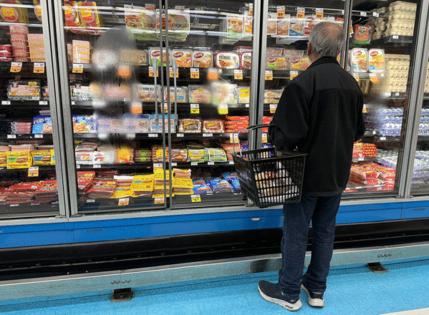More food companies are getting snatched up, and they all have something in common
Published in Variety Menu
When Steve Young sat down to talk about the food industry in September, the managing partner at investment firm Manna Tree predicted that as major players struggle to sell more food, “they’re going to be looking for acquisitions.”
“It’s companies that can prove customer loyalty, where you’re doing something different for the consumer and it’s worth paying more,” he said.
In the months since, PepsiCo shelled out $1.2 billion for Siete Foods; Keurig Dr. Pepper wrote a nearly $1 billion check for energy drink brand Ghost; and Hershey picked up Sour Strips for an undisclosed sum.
General Mills also announced, after selling Yoplait, the Minnesota food giant wouldn’t mind spending a few billion for an acquisition of its own, which culminated in a $1.45 billion pet food purchase Thursday.
Eager entrepreneurs looking for their own payday can assume one thing about the brands getting snatched up: They’re making money.
“The only way to get acquired now is with unit economics,” Young said, meaning profitable on a per-unit basis.
Talking again this week, Young said the rate of big food firms scooping up smaller companies will only speed up next year.
“At the highest level, you’re seeing larger companies trying to reignite their volume growth by getting exposure to places they maybe can’t get after on their own,” he said. “It could be a banner year.”
Food companies had a run of strong profits and growth coming out of the pandemic, but “the majority of sales growth for food and beverage brands has stemmed from price inflation,” wrote economist Billy Roberts in a recent CoBank report. “As that eases, companies are feeling the pressure to return to profitable volume-led growth,” selling more pounds of food overall.
Acquisitions, he wrote, are increasingly the answer.
That’s welcome news for upstart brands that have seen investors back off following the plant-based gold rush and higher interest rates. But the bar is higher than ever, and not just for financial performance.
”It can’t just be a me-too or a copycat product. People will just turn to private label and save money,” Young said.
Young, a General Mills veteran, joined Manna Tree two years ago. The firm has offices in Colorado and Minneapolis and focuses on health and wellness-focused companies that have already grown and need help navigating the “last mile” before a public offering or acquisition.
Manna Tree investments range from $25 million to $75 million, and the portfolio includes the New Primal, Health-Ade kombucha and Good Culture cottage cheese.
Following are more thoughts shared by Young on how money is flowing in the food industry, edited for clarity and space.
Why unit economics?
Any company, whether General Mills or Kraft or Hormel or non-food consumer packaged goods companies, what they’re looking for right now are ways to accelerate an existing core platform — like General Mills has done in pet — or they’re looking at reaching a new consumer.
The common thread is: Companies are looking for scale that can really drive financial impact. The underlying business has to be there.
The positive I say to all those entrepreneurs feeling like the goalposts just got pushed further out is: There are companies setting themselves up well and have good unit economics. And there’s a whole ecosystem of entrepreneurs and investors to help companies drive scale — that’s the central thesis behind Manna Tree, trying to take healthier companies and help them accelerate before they’re on a large company’s radar.
Why a health and wellness rule?
At Manna Tree, we focus on what will help people not just live longer but live better, longer. You can’t out-exercise a bad diet. We’re looking for change agents in food and beverage with a focus on health and wellness and bring in our own operating expertise.
I think 2025 is going to be the year of clean ingredients and simplicity. It’s going to be really interesting to see big and small companies respond to that consumer trend.
When I step back and see things like that Siete acquisition, I just think the consumer is ultimately the winner. Anything we can do to make healthier alternatives available at scale to more and more people, the better we’re all going to be.
What about growth trends?
Food companies went through a period of time where just getting bigger was better no matter what, and companies got into new categories and temperature states and they’d grow for the sake of growing.
Now we see more focused growth. Like with the Yoplait divestiture, General Mills looked at what it takes to build a growing yogurt brand, saw a disconnect with its other businesses and decided it’s going to be a better fit for a pure-play dairy company. We’re going from this era of big cross-category to an era of ‘let’s really define what we’re good at.’
©2024 The Minnesota Star Tribune. Visit at startribune.com. Distributed by Tribune Content Agency, LLC.










Comments